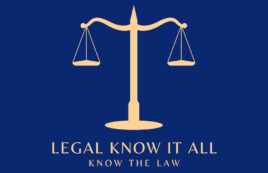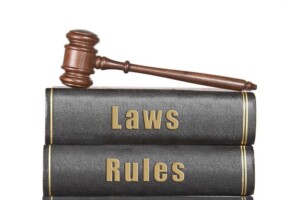Forensic DNA analysis has revolutionized the world of criminal justice, offering a powerful tool for identifying suspects, solving cold cases, and even reversing wrongful convictions. The ability to extract DNA from crime scenes and match it to individuals with a high degree of accuracy has led to countless breakthroughs. However, despite its precision, forensic DNA is not without its limitations. Misinterpretations, contamination, or even over-reliance on DNA evidence can sometimes lead to incorrect conclusions and wrongful convictions.
As we explore the impact of DNA in forensic investigations, it’s essential to understand both the science and the limitations behind it. Just as DNA evidence has been key to exonerating the wrongfully convicted, it has also been at the center of some legal controversies. This article delves into how DNA analysis is used, the boundaries of its effectiveness, and the legal challenges that arise when forensic science is placed under the courtroom spotlight.

The Science Behind Forensic DNA Analysis
Forensic DNA analysis relies on the unique genetic makeup of individuals to help identify suspects or exonerate the innocent. At the core of this process is the extraction of DNA from biological samples—such as blood, hair, or saliva—found at crime scenes. Once the DNA is extracted, it’s compared against a reference sample, typically from a suspect or database, to find a match.
- DNA Extraction and Profiling
The DNA from crime scene evidence is isolated and analyzed. Scientists focus on specific regions of the DNA that are known to vary significantly between individuals. This makes it easier to differentiate one person’s DNA from another. If the profiles match, it suggests the individual’s presence at the scene. - Accuracy and Reliability
Forensic DNA is known for its high level of accuracy, often matching individuals with certainty. However, the precision of DNA analysis depends on how well the sample was collected and preserved. Even in cases of partial matches, DNA can point to potential suspects, but it must be used cautiously to avoid misidentification.
Despite its strengths, DNA evidence has its limitations. For example, contamination or transfer can lead to false positives, where DNA from one person is accidentally introduced to another sample, making it difficult to trust the results.
For more insights on how DNA is used to correct injustices, check out how DNA evidence is reversing wrongful convictions.
Case Study: Forensic DNA’s Role in a Legal Case
Let’s consider a case where forensic DNA evidence played a pivotal role in a high-profile legal trial. In this case, a man was accused of a violent crime based on DNA evidence collected from the crime scene. Investigators found traces of the suspect’s DNA on the victim’s clothing, and this match became the cornerstone of the prosecution’s argument.
However, as the defense team dug deeper into the evidence, they discovered potential flaws in how the DNA sample was handled. The sample had been exposed to multiple sources of contamination during collection and storage, raising doubts about its reliability. This case demonstrates how the presence of DNA alone isn’t always enough to secure a conviction—it must be corroborated with other evidence.
This story mirrors some of the unbelievable courtroom dramas where the stakes are incredibly high, and a single piece of forensic evidence can turn the tide of the trial. In the end, while DNA evidence is powerful, its accuracy and integrity must be carefully scrutinized to ensure justice is served.
The Limitations of Forensic DNA Analysis
While forensic DNA analysis is a highly effective tool in the justice system, it comes with significant limitations that can lead to errors or misinterpretations:
- Contamination
One of the primary concerns with DNA evidence is contamination. If the crime scene or evidence is not handled properly, external DNA can be introduced, leading to false matches. For instance, investigators or even equipment used during analysis can transfer DNA from one sample to another, causing the wrong person to be implicated. - Partial or Degraded DNA
In some cases, only partial DNA profiles are available, especially if the biological sample is small or degraded. This reduces the accuracy of the match and increases the risk of implicating the wrong person. Partial matches can still lead investigators in the right direction but must be treated cautiously. - Secondary Transfer
DNA is highly transferable. It’s possible for someone’s DNA to be transferred indirectly—such as through a handshake or shared object—leading to their DNA being found at a crime scene they were never present at. This introduces the risk of false positives in the analysis. - Over-Reliance on DNA
There’s also a risk of over-reliance on DNA evidence in courtrooms. DNA is often seen as irrefutable, leading juries and judges to place too much weight on it. However, as shown in wrongful conviction cases, DNA should be just one piece of the puzzle, not the sole determining factor.
In high-stakes trials, these limitations highlight the importance of scrutinizing DNA evidence, much like understanding the nuances of legal loopholes to avoid injustices in the legal system.
Ethical and Legal Challenges in Using DNA Evidence
The use of DNA evidence in legal cases presents not only scientific challenges but also ethical and legal dilemmas. While forensic DNA has the power to solve crimes and exonerate the innocent, its misuse or over-reliance can lead to serious consequences.
- Privacy Concerns
Collecting and storing DNA samples raises significant privacy concerns. DNA contains sensitive genetic information that, if mishandled, could be used for purposes beyond the original intent, such as genetic profiling or surveillance. As DNA databases grow, so do the concerns about who has access to this data and how it’s being used. - Bias and Misuse
There’s the risk that DNA evidence can be misinterpreted or manipulated to fit a particular narrative. For example, prosecutors may emphasize the certainty of DNA matches without acknowledging the potential for contamination or secondary transfer. This can lead to wrongful convictions, particularly in cases where juries place undue trust in DNA evidence without considering its limitations. - Ethical Dilemmas in DNA Collection
In some instances, law enforcement agencies have sought to collect DNA samples from individuals without proper consent or warrants, leading to debates about the legality and ethics of such practices. The question of where to draw the line between solving crimes and protecting individual rights continues to be a contentious issue in the legal system.
These ethical and legal challenges highlight the need for careful oversight when handling forensic DNA evidence, ensuring that it is used responsibly and in conjunction with other evidence. For individuals facing legal situations involving DNA, arming yourself with legal knowledge is crucial to navigating the complexities of such cases.
As an Amazon Associate we earn from qualifying purchases through some links in our articles.




